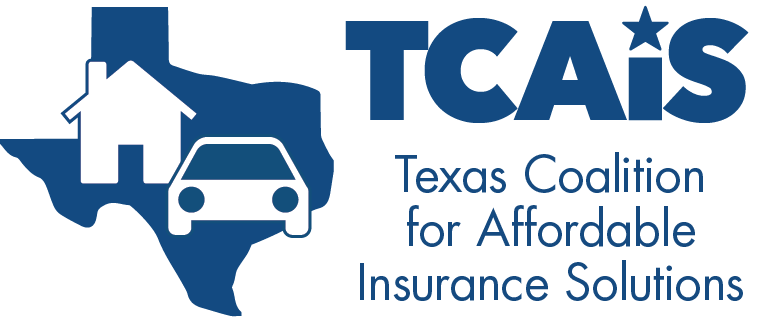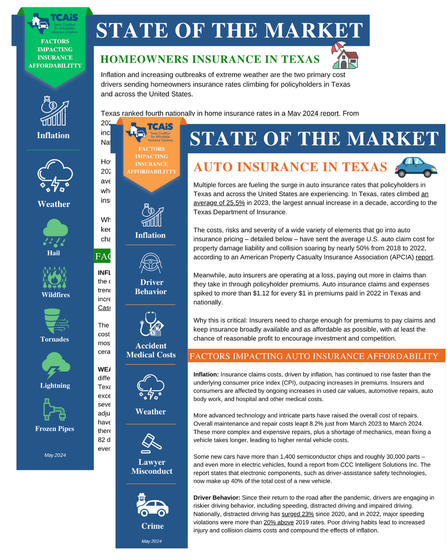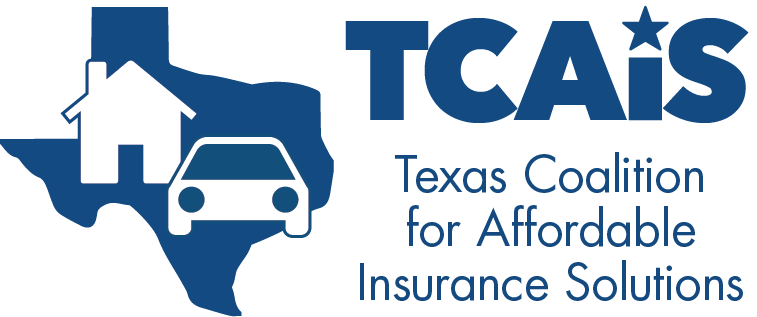Our Mission
Our goal is to bring together everyone with a stake in insurance issues—which is nearly all Texans—to collaborate on solutions that improve insurance affordability and accessibility across the state.
- Learn more about Texas insurance regulation
- Legislature Adjourned - View Key Issues
Issue Profile: Losses Ratios
State of the Market
Multiple factors are driving the rise in homeowners and auto insurance rates affecting policyholders in Texas and nationwide. To better understand the trends behind these increases, explore our latest State of the Market reports:
Key Issues
Texas’ insurance market has remained stable since the Legislature enacted landmark reforms in 2003. To preserve this progress, the state must stay committed to policies that both protect consumers and foster a competitive environment that encourages insurers to do business in Texas.
Risk Mitigation
While we can’t control the weather or the broader inflationary pressures that drive insurance costs, policymakers have the power to enact meaningful reforms that save lives, reduce loss and damage, lower insurance claims, and ultimately help bring down premiums for consumers.


